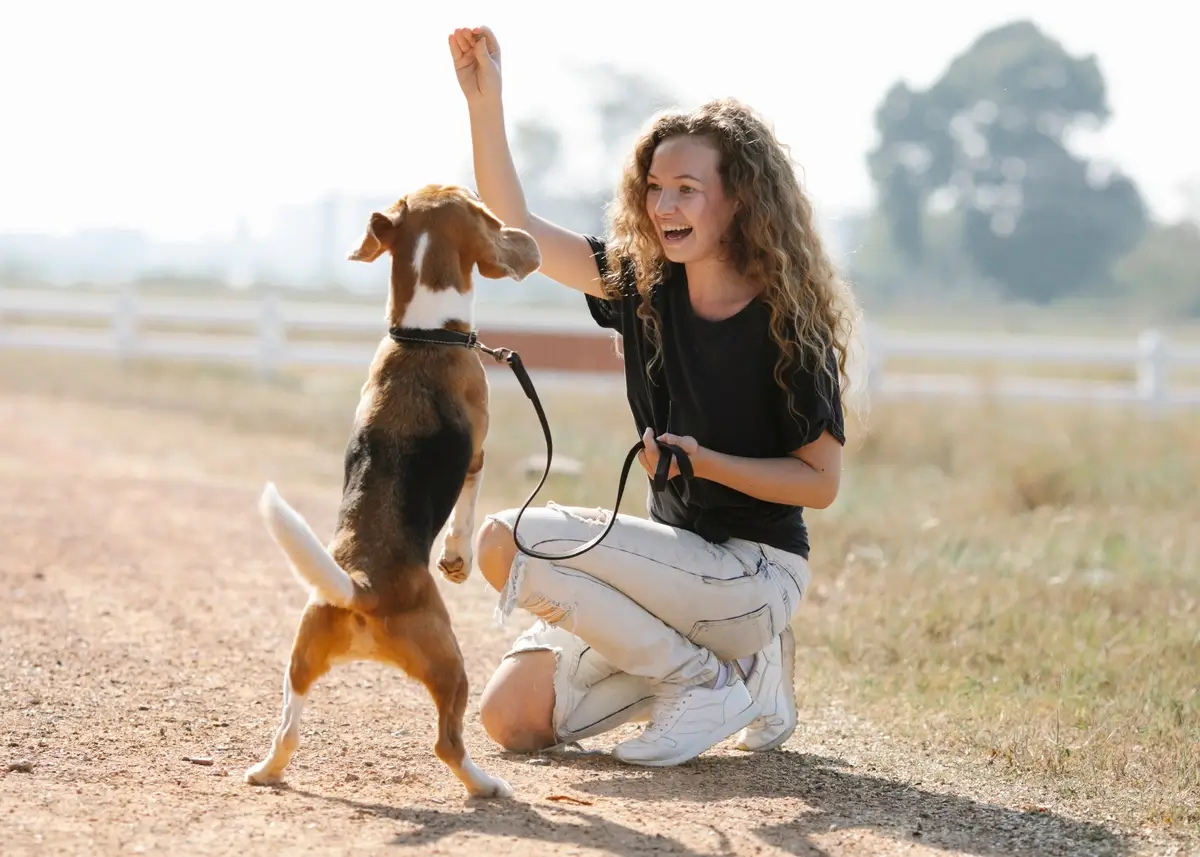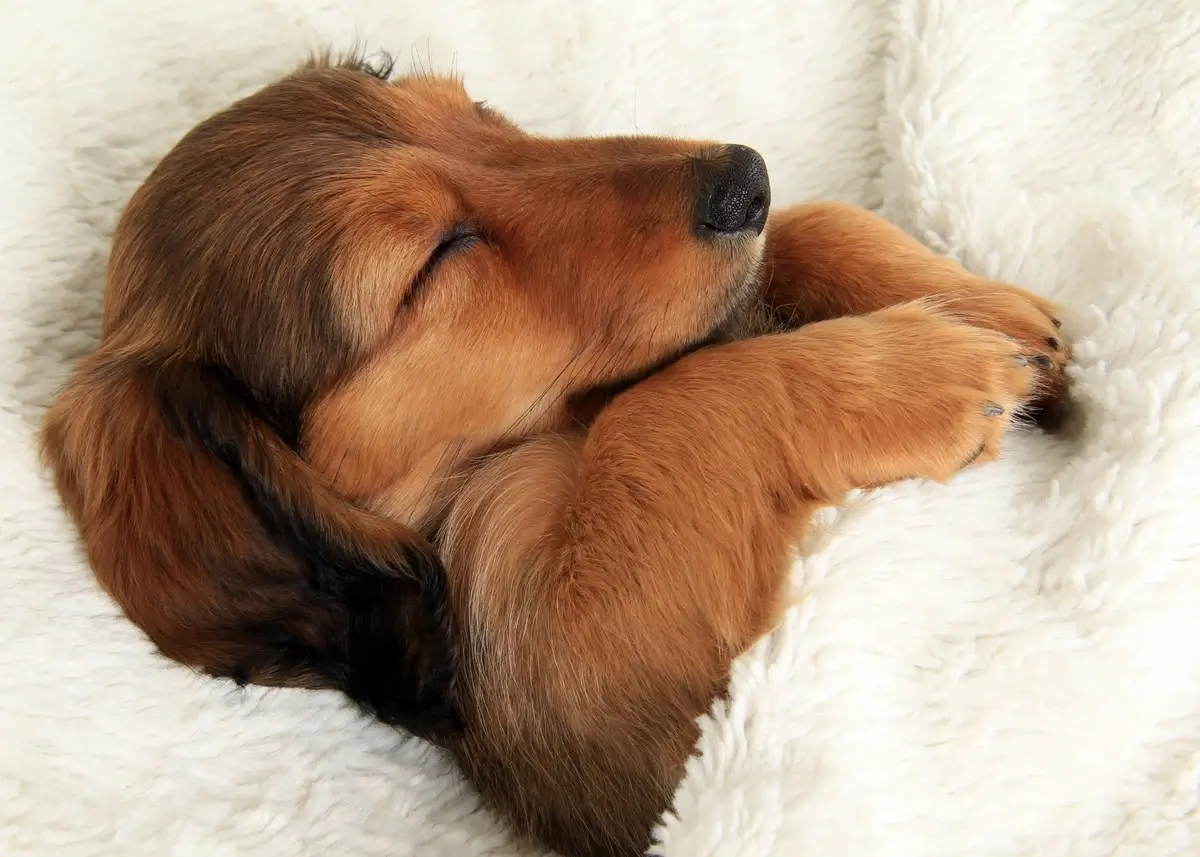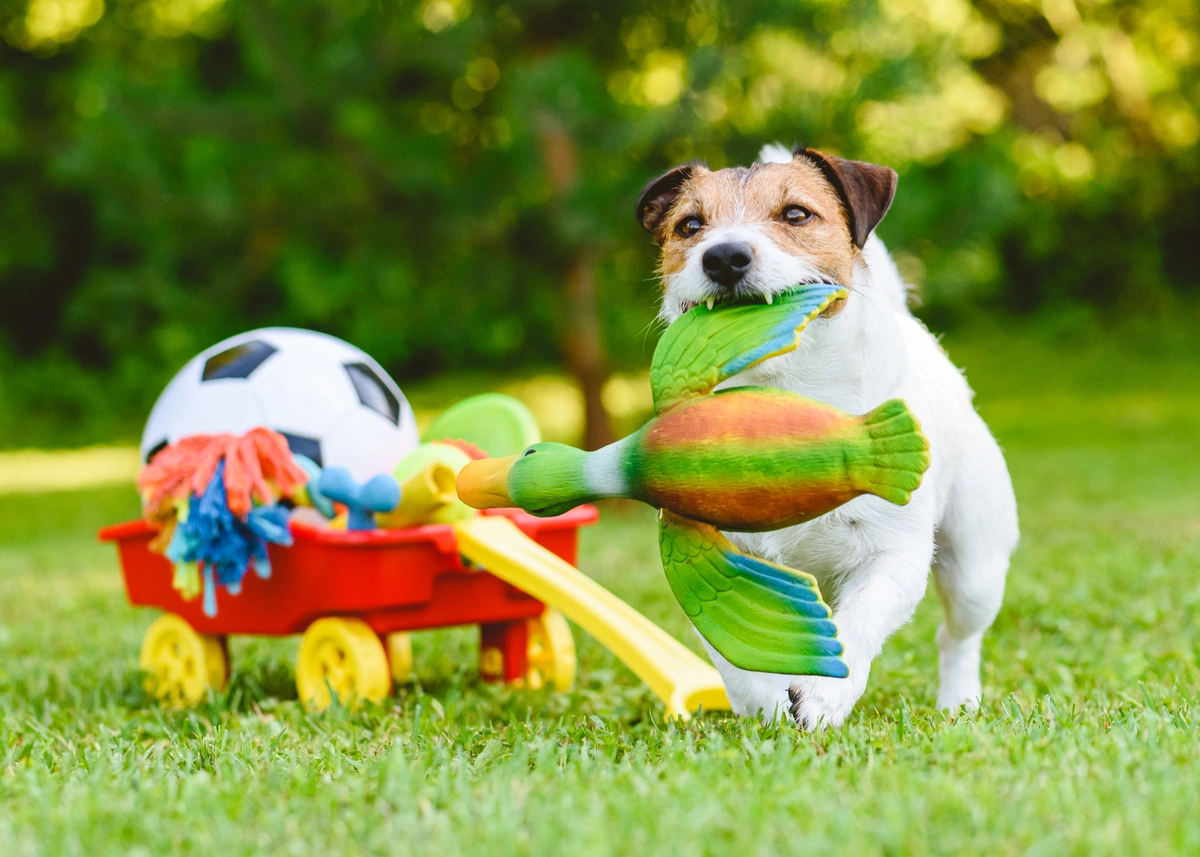Congratulations! You’ve brought home your sweet ball of fluff and can’t wait to get started doing all the things you can to raise a happy, healthy puppy. You’ve got the toys ready, nutritious puppy food, a leash, a harness, and have scheduled your puppy’s next well visit. Now what?
If you’re planning on winging it with raising a new puppy, you may want to think over your “strategy” and take it from us that it won’t work out! Behaviors that little puppies do may be cute, but you don’t want them to grow into adult dogs with terrible manners, no training, relieving themselves all over the house, and sub-par socialization skills. Puppies need routine and structure to thrive.
By providing structure and consistency, developing a puppy schedule sets the foundation for a happy, healthy, and well-adjusted adult dog. Find out why puppies need a daily schedule and how to establish a routine for your puppy with our tips.
Why Does My Puppy Need a Routine & Schedule?
Having a predictable puppy schedule is crucial for a puppy's well-being and development. Establishing a consistent daily puppy routine provides a sense of structure and security that is essential for their overall growth and behavior.
Schedules help with basic puppy needs
A daily puppy routine helps regulate a puppy's basic needs, such as eating, sleeping, and bathroom habits.
Feed on time
By sticking to a regular feeding schedule, your puppy's digestive system becomes more predictable, reducing the chances of digestive issues. The best thing you can do is to allow plenty of time in the morning to feed your puppy because they need time to eat, and you’ll give them time for their digestive system to get moving again after being asleep so they can answer nature’s call before you leave the house. This means you’ll need to align your schedule with your puppy’s.
Most puppies will eat 3 times a day, so you can schedule those meals around your own. Puppies like to be with their pack and eat at the same time, too. You may wonder when to switch a puppy to adult dog food, so be sure to look for the signs that your growing puppy is ready, and adjust your feeding schedule accordingly.
Catch some Zzzzs
A consistent sleep schedule ensures that the puppy gets adequate rest, which is vital for their physical and mental health. Your puppy will sleep around 18-19 hours a day, leaving 4-5 hours to pack in all the puppy activities. A lack of regularly scheduled and adequate sleep can lead to your puppy becoming overexcited or overtired resulting in bad behavioral problems.
Give potty breaks frequently
Regular bathroom breaks not only promote good hygiene but also aid in housebreaking and teaching appropriate elimination habits. Young puppies will need to go outside to relieve themselves around every hour when potty training your puppy. Making your puppy hold it could definitely lead to accidents and more serious health conditions, so always provide enough time to allow your puppy to regularly relieve themselves.
Puppy training is easier with a schedule
A structured schedule makes it easier to incorporate puppy training sessions. Consistent training at specific times helps them grasp commands and behaviors more effectively. Additionally, scheduling regular socialization opportunities allows the puppy to interact with other dogs, people, and various environments, promoting their social skills and confidence.
Prevent behavior problems
A daily routine for your puppy can prevent behavior problems. Puppies are energetic and curious, and without a routine, they may become bored or engage in destructive behaviors. A well-planned schedule provides opportunities for physical exercise, mental stimulation, and playtime, channeling their energy into appropriate outlets and reducing the likelihood of destructive behavior.
Benefits of Walking Your Puppy
In addition to meeting basic needs, walking your puppy and taking it outside will be a large chunk of your daily routine for your puppy. The benefits of walking your puppy are far more numerous than just meeting their exercise needs. Regular walks allow your puppy to discover new surroundings and experience a variety of sights and smells. These walks contribute to keeping your furry friend physically active and mentally engaged.
Humans experience all sorts of benefits when we walk our puppies, too. Taking your puppy for a walk offers a fantastic opportunity to disconnect from technology, enjoy the outdoors, get some exercise, improve your mental health, and strengthen your bond with them. From enhancing blood pressure and bone density to promoting healthier sleep patterns, walking our puppies is a win-win situation, benefiting both them and us.
Incorporating one or two daily dog walks into your puppy’s routine can foster their sense of security and confidence as integral members of the family unit.
Sometimes, we might feel like skipping a walk. There are various reasons – some of them are valid, while others are not so much. Inclement weather, behavioral challenges, lack of motivation, fatigue, childcare responsibilities, work commitments, illness, or lack of planning can derail even the best intentions for a walk, but it is crucial to recognize the advantages of maintaining a consistent schedule.
If you’re looking for dog walking tips for a great experience, it helps to have a few tricks up your sleeve to keep walks exciting for both you and your puppy. If you do the same route every time, you and your puppy may get bored. It’s fun to switch up your routine and introduce new techniques.
Training your puppy on a walk
Teaching your puppy to walk on a leash is an essential skill they need to learn since it's not something they naturally know from birth. It's important to choose the right dog leash and find the best dog walking harness for your puppy to start off on the right paw. You’ll need to teach your puppy leash manners because behaviors like lunging, jumping, excessive barking, or growling are not desirable.
To start, engage in short training sessions with your puppy to acclimate them to the leash and teach them basic commands. Some useful basic dog training commands to practice with a leash include Sit, Heel, Go Potty, Come, Down, Leave it, and Drop it.
Bringing a small pouch of tasty, high-value treats will help reinforce positive behavior during training sessions, making the learning process more effective.
The Importance of Mental Stimulation For Your Puppy
Not only do puppies require the right amount of exercise for their breed but they also must have mental stimulation where you provide opportunities for your puppy to use all five senses that engage their brain. Allowing your puppy to actively practice their natural problem-solving abilities will contribute to their overall wellness. The benefits of mental stimulation for puppies are numerous:
- Prevents destructive behavior
- Builds neurological pathways in the brain
- Reduces puppy separation anxiety
- Cuts down on potential aggressive behavior
- Combats effects of canine aging
- Prevents the chance of rehoming or surrender
- Promotes a puppy-owner bond
If you’re wondering about how you can keep your puppy mentally stimulated, have no fear! From high-tech items to simple DIY homemade toys and brain games to mentally stimulate your puppy, you won’t lack in ideas and can rotate methods for new experiences. Some ideas include setting up an obstacle course outside or in your living room, enrolling in specialty training, puzzle toys, going on a scent walk, making a treasure hunt, giving a treat dispenser, or rotating out toys to mentally stimulate your puppy.
Bonding With Your Puppy
Bonding with your puppy is crucial for establishing a strong and loving relationship. By investing time and effort into building a bond, you create a sense of trust, companionship, and mutual understanding. This bond promotes better communication, enhances obedience, and reduces anxiety or behavioral issues. It also brings joy and fulfillment to both you and your puppy, fostering a lifelong connection that will make your journey together more rewarding.
If you’re stuck trying to think of bonding opportunities beyond snuggles and cuddles, we have several suggestions for various ways to show your love to your puppy.
What to Consider When Making a Daily Routine For Your Puppy
When deciding what puppy schedule is right for you and your puppy, consider a few things:
- Your personal schedule: Try to separate your day into chunks like morning, lunchtime, and evening. You can build your puppy’s schedule around your existing schedule.
- Your availability: Are you home during the day? Should you hire a dog walker while your puppy is young if no one is home? Consider filling in gaps if you are not physically available for long periods of time for bathroom breaks, playtime, and exercise.
- Your puppy’s breed: Some dog breeds like to be cleaner than others and align more toward a cat’s grooming habits, while other dogs could not care less about their need to stay tidy and clean. While we like to consider all of our puppies as being smart, the reality is that some breeds catch on more quickly than others regarding training.
- The size of your puppy: Smaller puppies will have smaller bladders and faster metabolisms, which show themselves in bathroom trips and eating habits.
- The age of your puppy: Schedules shouldn’t be rigid or stay the same forever. As your puppy grows, their needs will change. For example, you may be feeding 2 times a day instead of 3 when your puppy switches to adult food. Likewise, your puppy’s bladder also grows, meaning they can hold it for longer periods of time.
A Simple Puppy Schedule for a Daily Routine
A daily puppy routine does not have to be complicated. Here’s a simple framework to help get you started. Keep in mind that your puppy is unique, so one routine will not fit all puppies.
- Wake up! It’s a new day!
- Take your puppy outside immediately. Lavish praise when they relieve themselves which may just be a tinkle.
- Feed your puppy according to your puppy’s feeding instructions. Allot about 15 minutes for your puppy to eat. If your puppy is not interested, put it up until next time.
- Play a mentally stimulating game with your puppy. This is a great time to introduce simple puppy commands or do bonding activities.
- Take your puppy outside again to allow them another bathroom break, this time making sure they have plenty of time to do all of their business. You can incorporate a walk and work on training as well.
- Play, play, play some more!
- Watch for cues your puppy is tired, and put them in their secure location to take a nap. It’s also a good time to practice quiet time in the crate and teach them how to be alone without being destructive. You can also put your puppy in their safe, secure spot while you’re eating dinner with the family to reduce the chance of having them underfoot or begging for table scraps.
Repeat when your puppy wakes up for the mid-day and evening routines. You may want to throw in some fun socialization time at the dog park or at a friend’s house as they grow older and are fully vaccinated.
Set a Routine for a Pawrade Puppy
We want to ensure you have a smooth transition from a Pawrade puppy’s breeder to your loving arms. If you’re looking through our puppies for sale, we’ll help you every step of the way in finding your perfect furry soulmate.





